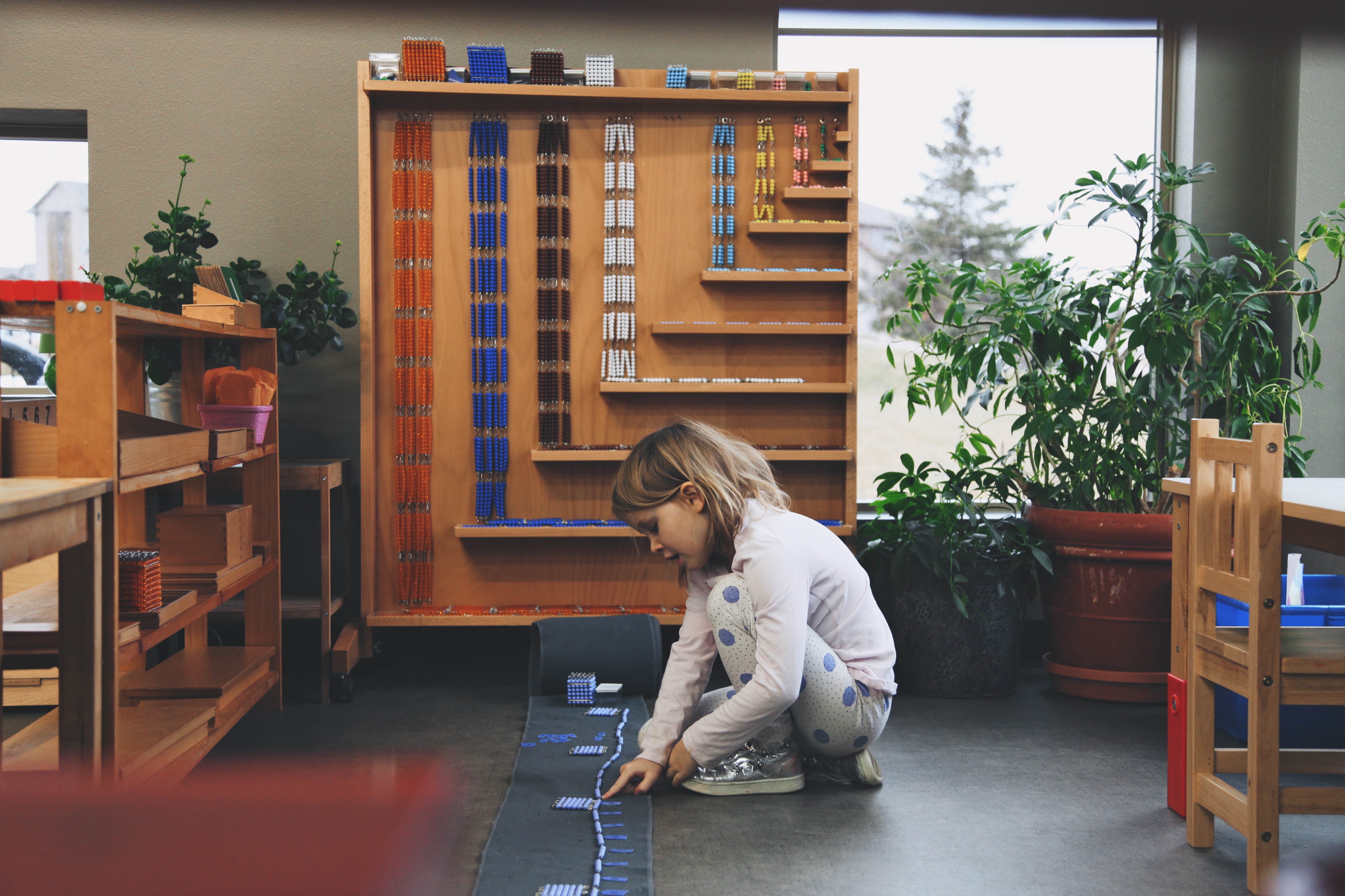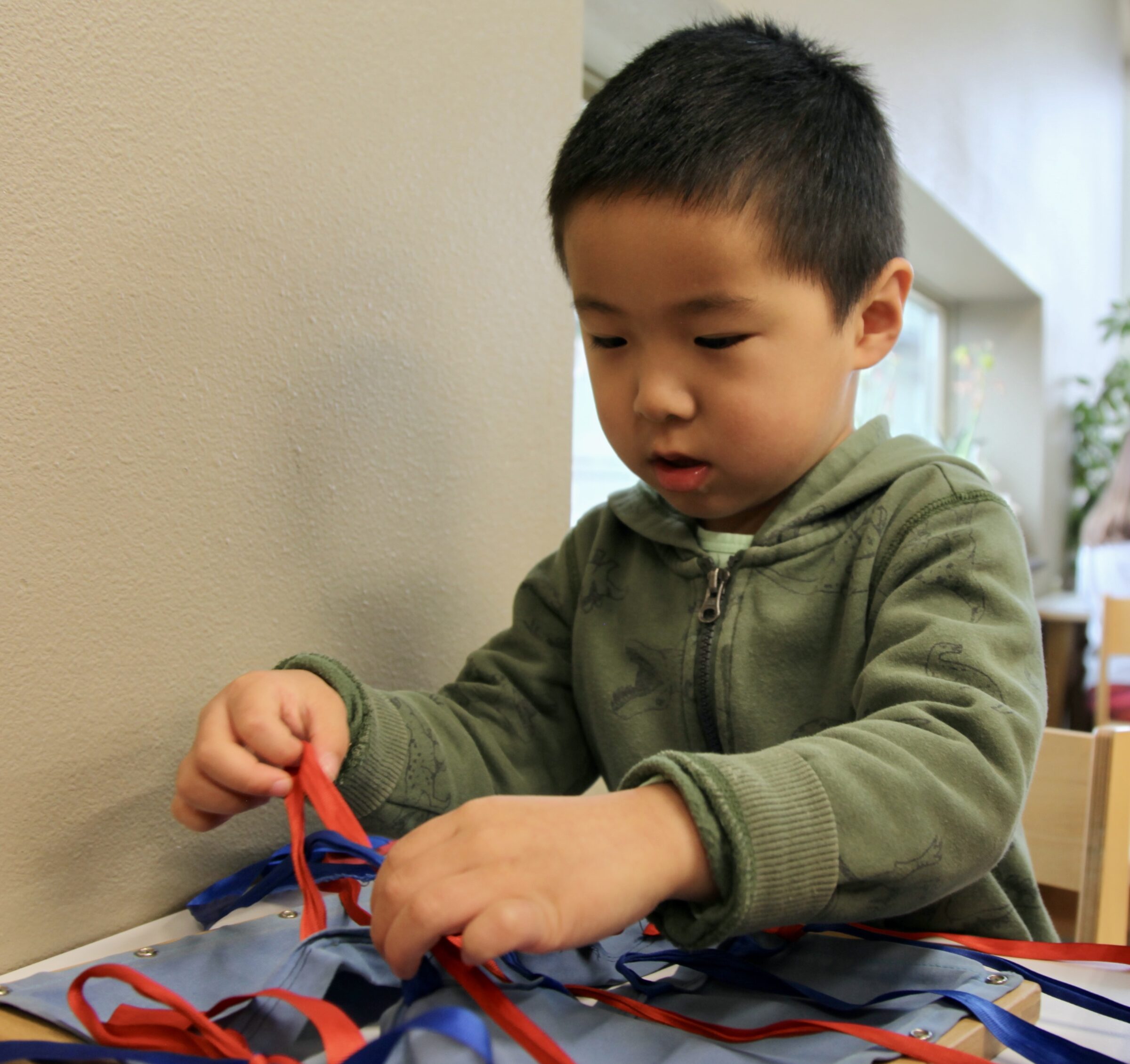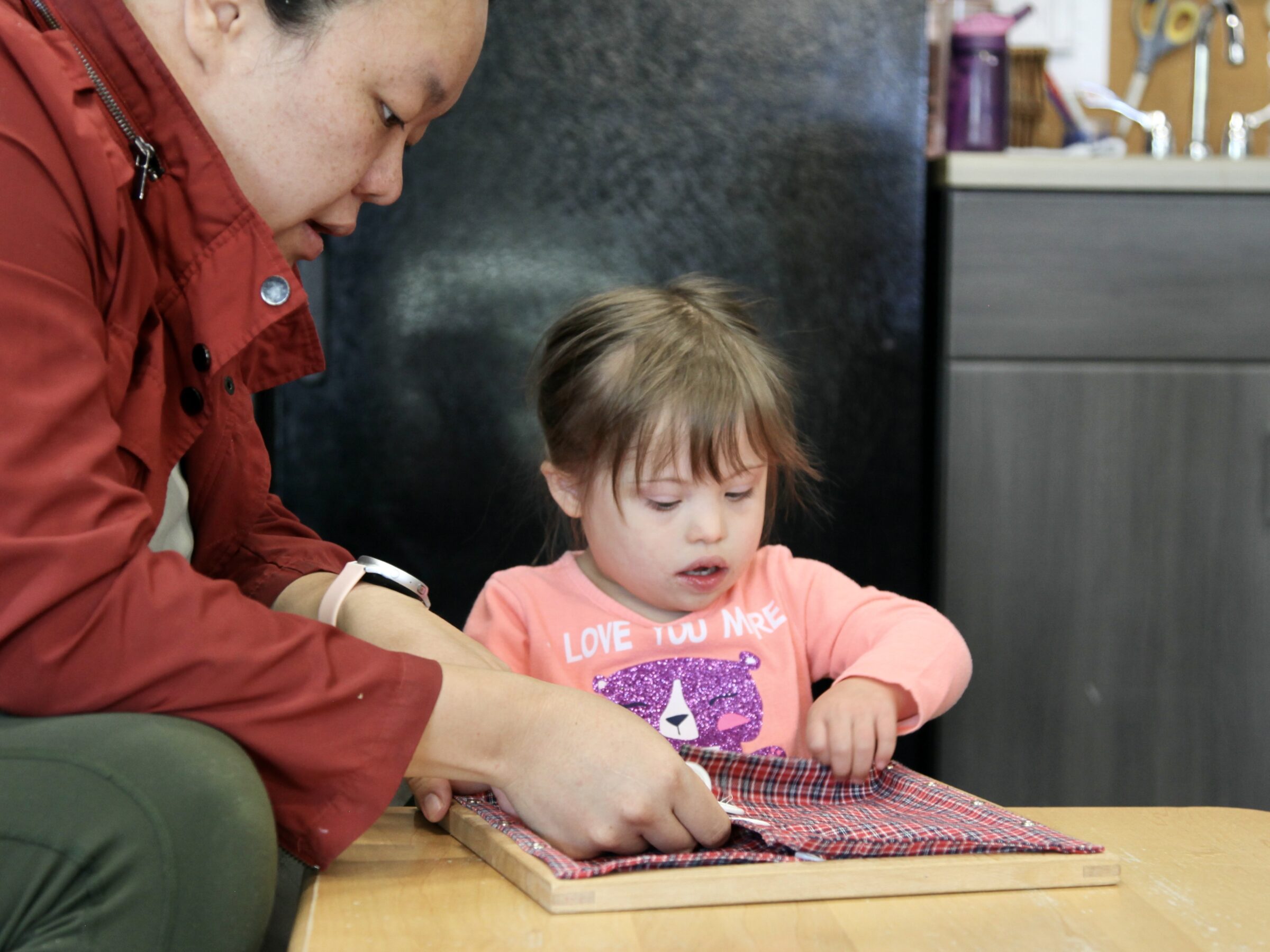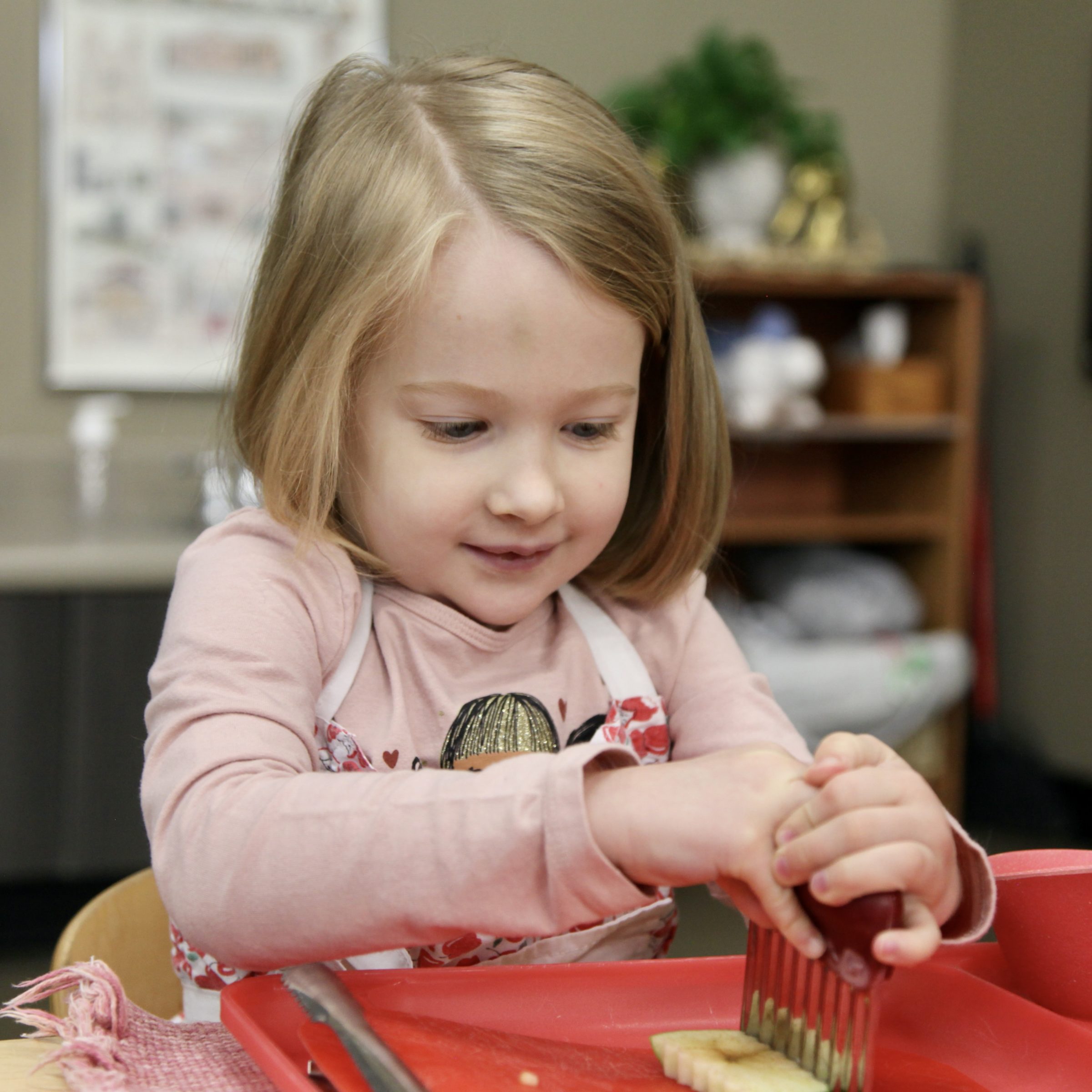Speaking and Silence in Montessori
Thoughts & Reflections
Montessori is an art and a science of balance. We believe in and implement individualized education, independent work carried out at primarily one-person tables, but the Montessori classroom is an incredibly social place, with children asking for and offering help, observing one another, and engaging in conversation.
There is a strong emphasis placed on language, and we play games with words all the time. For this reason, it might come as a surprise, when we’re introducing a material, or really any time we’re interacting with a child, we are particularly attentive to the words we choose.
…
Let’s take a few examples.
A child was hanging up his coat and removing his boots. Watching a two-year-old tidy after themselves is amazing. They’re meticulous, and often forget something we might start with. This child was trying to do everything without taking off his mittens. Amazingly, he did it. He picked up his lunch, and started walking into the classroom before someone made eye contact, tapped their hand and said, did you forget something?
He glanced down, noticed his mittens, turned around and returned them to their place, now ready to begin his day.
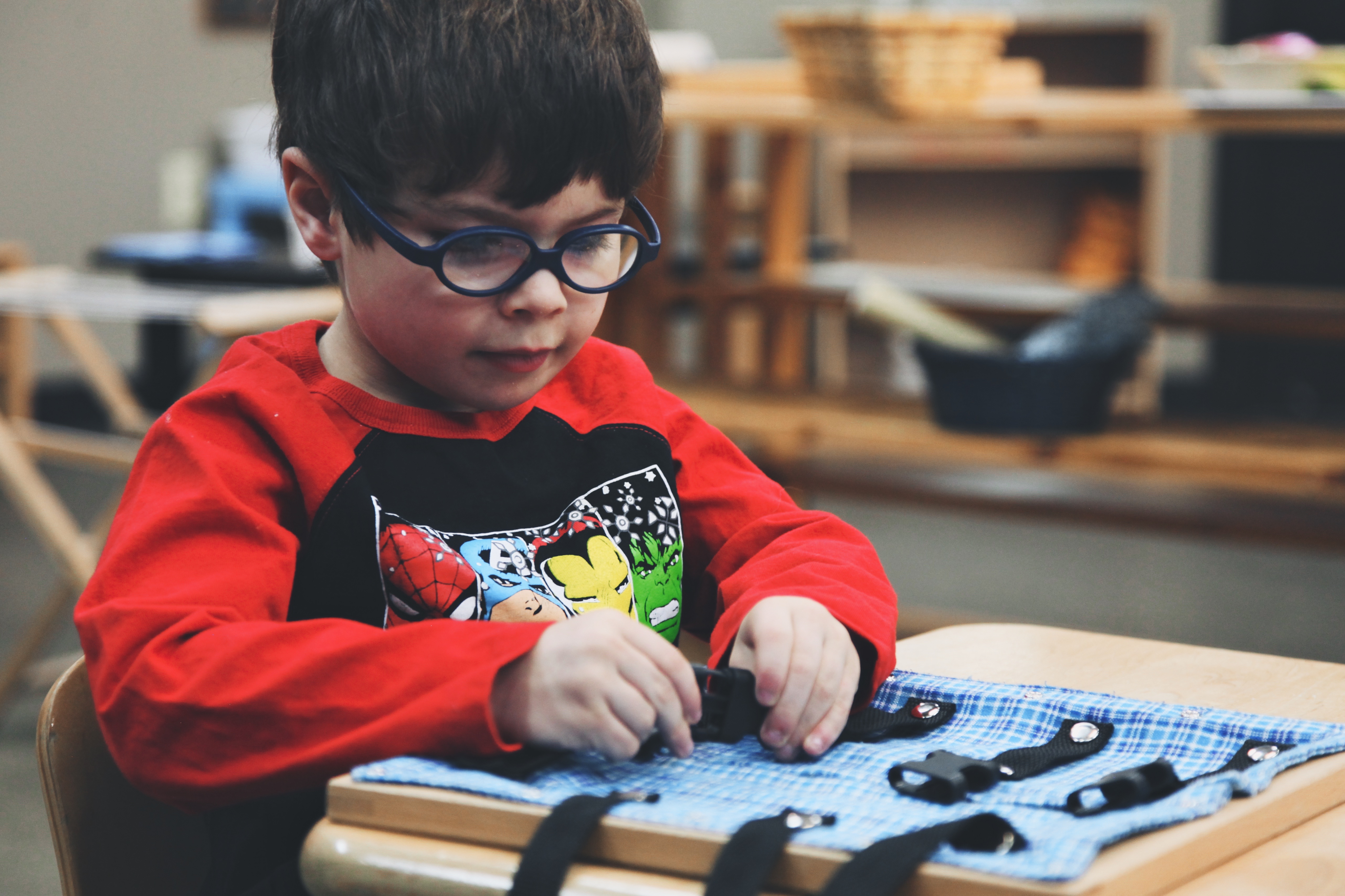
Another time, a child was trying to put away a puzzle. There are small slats inside the box, so the puzzles can be stored on these shelves, rather than each placed on the shelf. It takes coordination, though, and can sometimes be difficult to see why it isn’t working, why the puzzle is crooked or getting stuck. She was calm and patient, not bothered by the difficulty, and just kept trying. Eventually, she got it.
We present Opening and Closing Containers to a very young child, perhaps on their very first visit to the classroom. After all, there are so many things to open and close in the classroom, and we want you to be successful with this experience prior to encountering a container with a material. It’s much nicer to finagle an empty container, figuring out which careful movements are required, rather than the first time trying to open a container filled with polish, or ending up with tiny beads all over the floor.
Part of this work is matching the container to the appropriate lid. We visually compare, bringing a couple different lids over to the container before finding one which is the exact match.
…
All of these are situations which benefit from our silence or limited, careful words, but it would also be incredibly natural to speak up or to explain. Explaining is our downfall, and can be a detriment to learning.
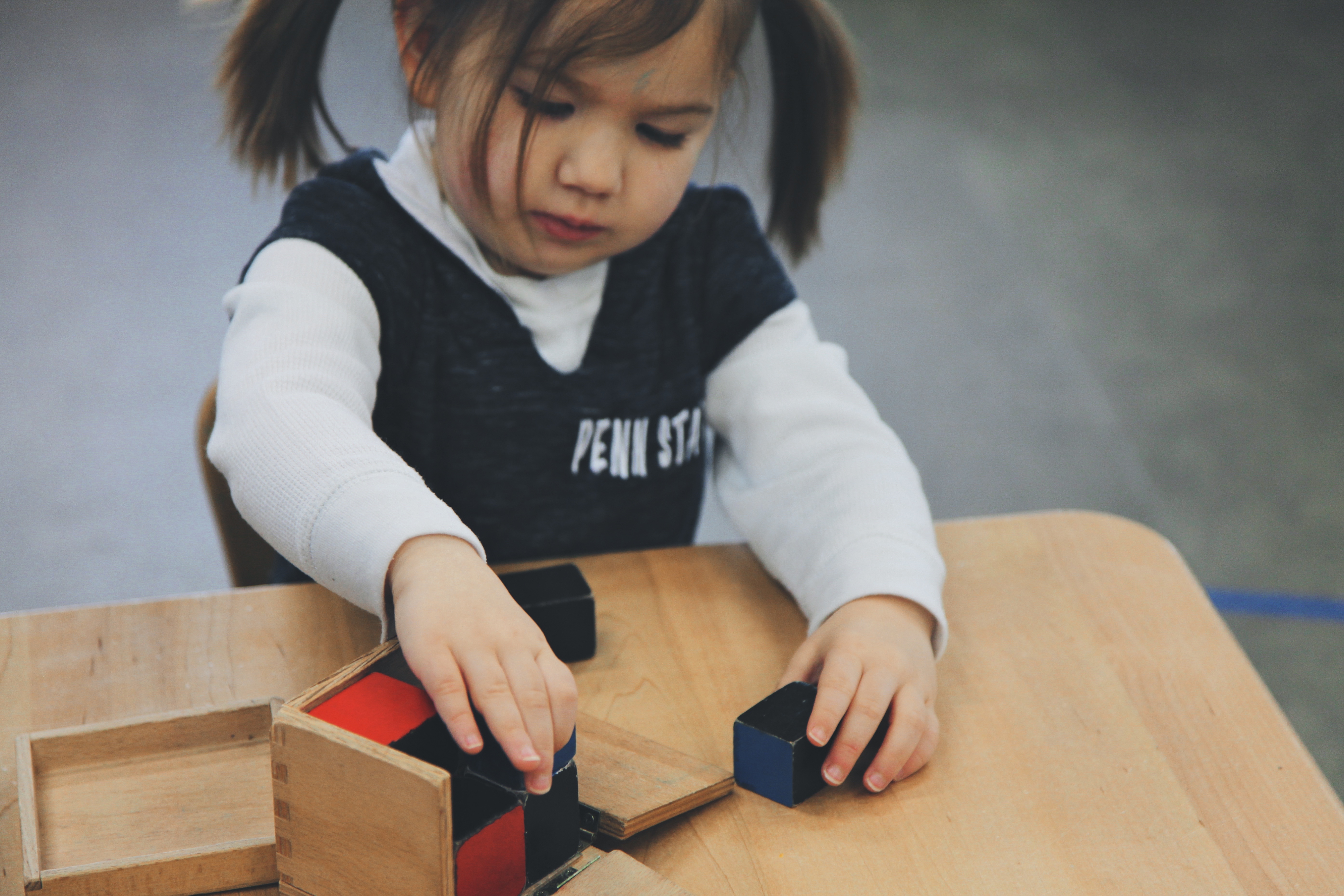
In the first example, I could have told the child what to do. I could have used my positive phrasing, asking questions and guiding a child in the right direction. “What do you need to do first?” “It’s helpful to take off your mittens before anything else.” This might have helped.
In the second example, I might have come over to save the child some time and some trouble. Explaining, “See, these notches? This is where each side goes. You can put one side of the puzzle in, and look to see that it’s level.” This might have helped.
In the third example, perhaps I could have used words, rather than my eyes, “This is a small bottle, so I’m going to look for a small lid. This is a yellow box, and oh look! A yellow lid! I bet they go together.” This might have helped.
Or maybe not.
We’ve experienced times when we make these comments, casually, with the intention of assisting a child. “What do you need to do first?” Sometimes, though, if we were quiet and paid closer attention, we’d realize the child is already doing exactly what we’re trying to cue them to do.
“Children mimic and repeat, and then apply meaning.”
We’ve experienced times when using words or actions to assist a child creates a dependency, or they don’t really understand what we’re saying, so the next time they go to put away the puzzle, they don’t try, but rather look to us for what to do.
We’ve experienced when we use words for clarity, but it really just muddles the water. When we use words, we’re verbalizing a visual sequence in our minds. Yellow box, yellow lid. We’re narrating the movie playing in our brain to help a child “see” what they’re supposed to do, but that’s not how learning words. A child is creating their own movie, their own visualization, and language helps them apply words to what they see, not to create a visualization.
It’s completely natural. As adults, this is how we learn. We memorize, we take what we know and apply it to what we don’t know. We extrapolate and make connections.

This, however, is not the same way children learn. Children mimic and repeat, and then apply meaning. They try and try and try until this a certain set of coordinations gets them what they want.
In some ways, we know this. We don’t explain to an infant how to sit up or how to walk, we simply act as a model (and then delight in a child’s achievements and send photos to everyone) and then move on to the next skill, walking or perhaps talking.
But then a child starts being able to explain what they want to do, and we think explaining back will be the biggest support. It’s similar to knowing when and what your sibling is doing is wrong, yet doing the exact same thing five minutes later — two different skills.
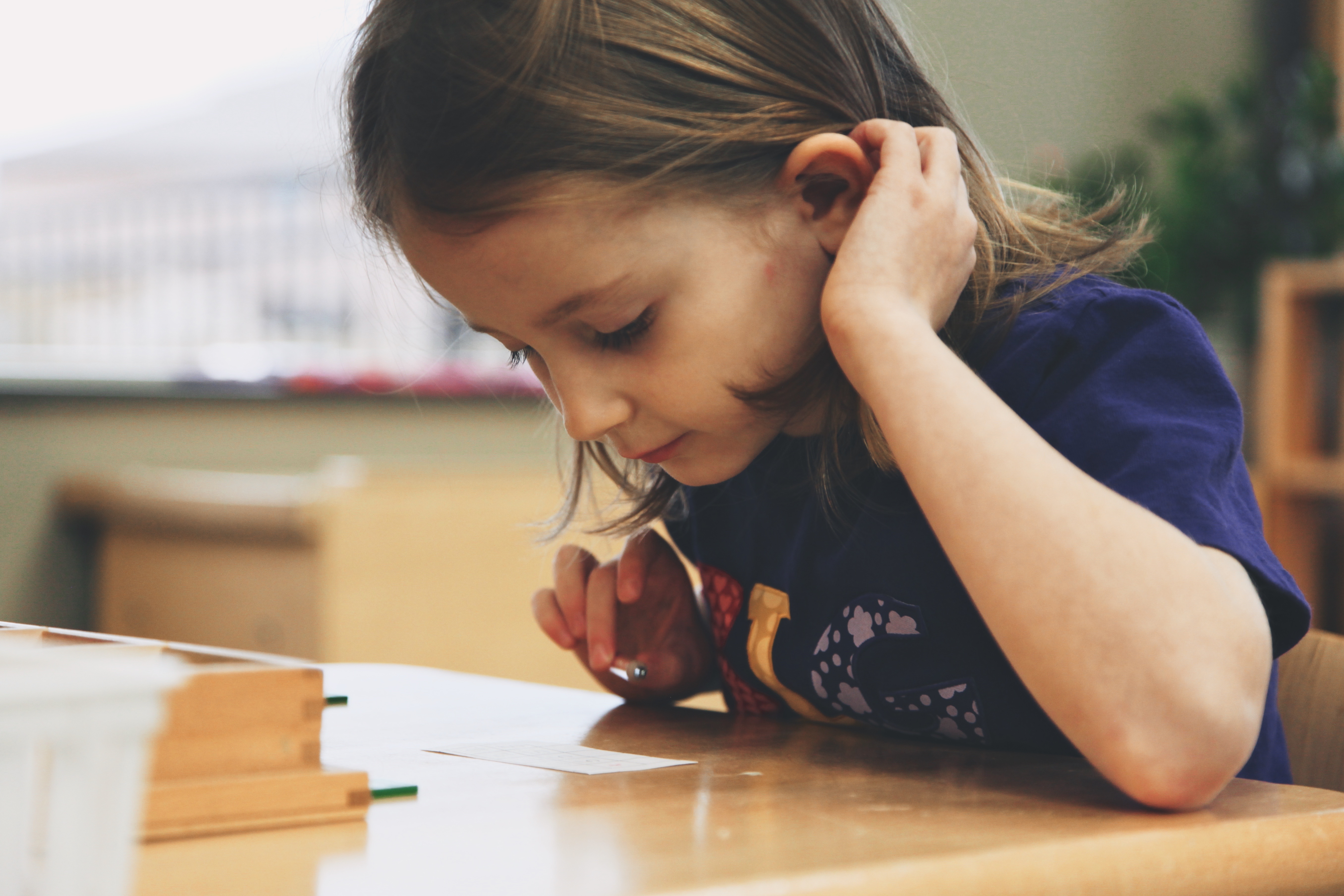
It’s also easier to speak than it is to watch. It’s our impulse, to tell children what they need to do, we accidentally assume they need us, and then we create this dependence, either in, “I don’t need to take off my coat until she tells me,” or in, “I don’t need to use my brain, she’ll tell me what comes next.”
When we allow children to work something out, to walk away from their cubby still wearing mittens, to try to put a puzzle away while we watch literally biting our tongues and sitting on our hands, while we wait to see how a child figures out which lid goes with which container while it’s abundantly obvious to us, we’re preventing logic and problem solving from taking place. Both logic and problem solving are skills we use daily, without even realizing it. They’re vital for daily life. And just think, by watching our words, we can support their development. We’ll be quiet.
Written by:
Charlotte Snyder
